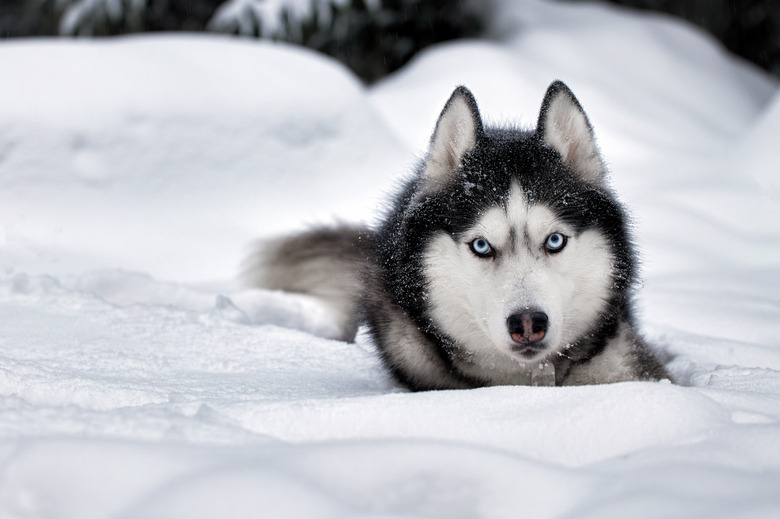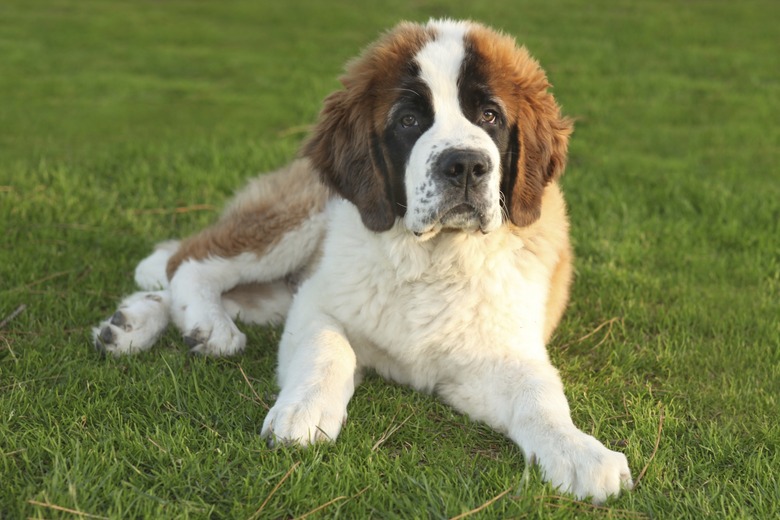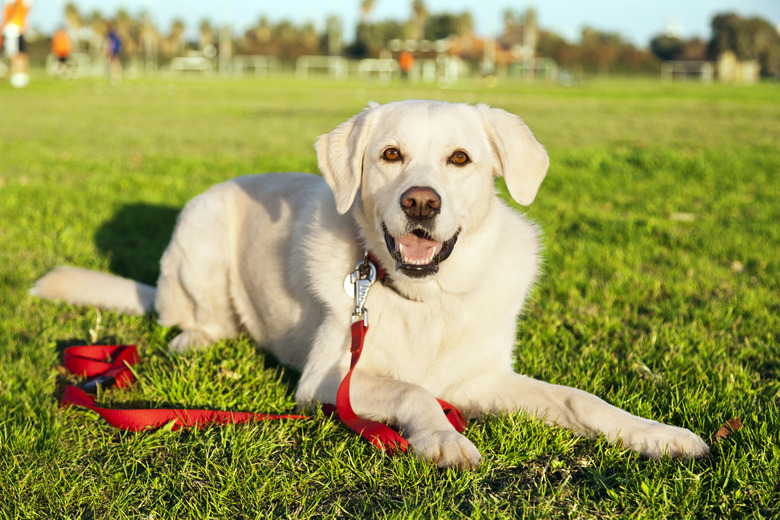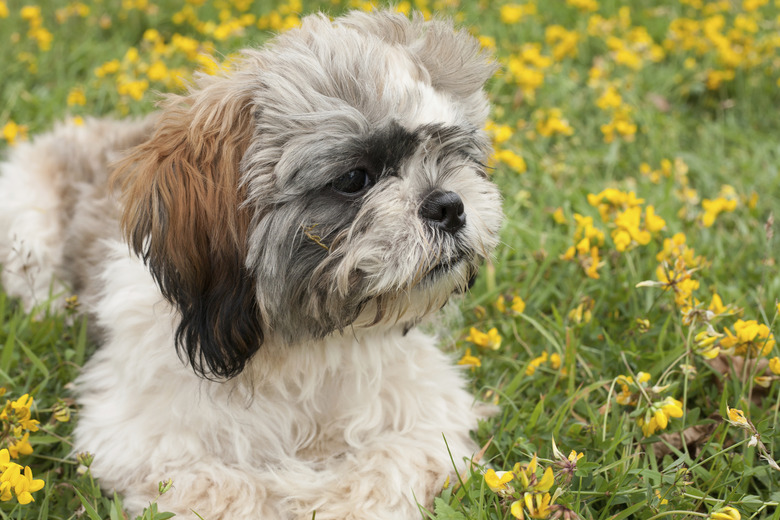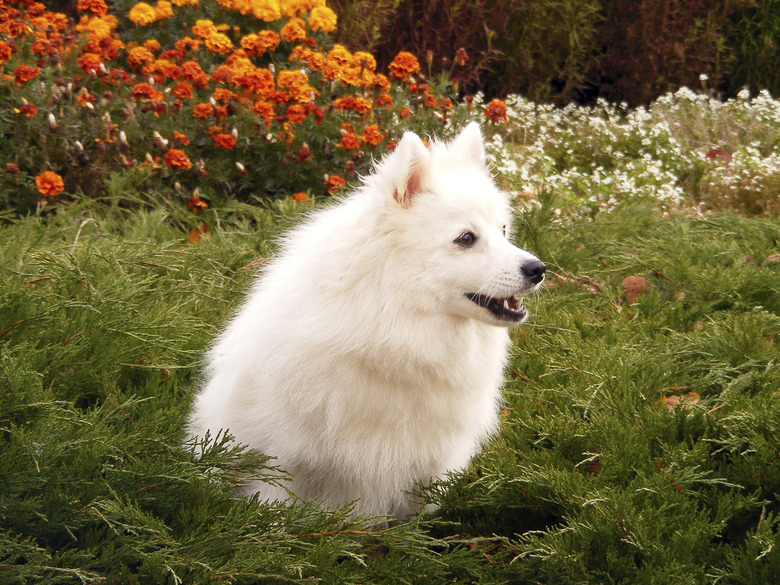Which Dog Breeds Have Double Coats?
There are many breeds of dogs in all shapes and sizes who have double coats. Double-coated dogs have an outer layer of long, smooth guard hairs and an undercoat of thick, soft, fuzzy hairs. The undercoat protects the dog against the extreme temperatures of both summer and winter. The outer guard coat protects the undercoat by repelling moisture and dirt. Double-coated dogs shed their undercoats in the spring and fall each year in what is called a "coat blow." Most single-coat dog breeds also shed, but not always as visibly.
The American Kennel Club lists dog breeds according to seven groups: working, herding, sporting, hound, non-sporting, toy, and terrier. Although double-coats are generally associated with spitz-type dogs such as the Siberian husky and their burly cousin the Alaskan malamute, several dog breeds from all AKC dog groups have double coats.
Working group and herding group dogs
Working group and herding group dogs
Both working and herding group dogs were bred to perform specific chores, whether it be pulling sleds, guarding property or herding cattle. Clearly, cold-climate, thick-coated huskies and malamutes are part of the working group. Other dogs in the working group with double coats are saint Bernards, Tibetan mastiffs, black Russian terriers, Kuvaszs, Newfoundlands, Leonbergers, Entlebucher mountain dogs, komondors, great Pyrenees, and Bernese mountain dogs. All these dogs shed considerably and require regular brushing.
Herding group dogs with double coats are German and Australian shepherds; rough, smooth and bearded collies; Old English, Belgian and Shetland sheepdogs; Polish lowland sheep dogs; Pembroke and Cardigan Welsh corgis; rough and smooth coat border collies; Beaucerons, Belgian malinois, Belgian tervurens, briards, bouvier des flanders, pulis, canaan dogs, Swedish vallhunds, and Australian cattle dogs.
Sporting group and hound group dogs
Sporting group and hound group dogs
Dogs in the AKC sporting group were bred to be active participants in the water and the woods for hunting and other outdoor activities. A double coat gives them the added protection of being water repellant, a benefit to performing their duties. The double-coated sporting group dogs are Labrador, golden, Chesapeake Bay and Nova Scotia duck tolling retrievers; American water and boykin spaniels; and wirehaired pointing griffons.
Hound group dogs also are used for hunting because they are able to track animals with their increased sense of smell. The plott hound and the otterhound each have double coats. Note also there is one, nonsporting group, double-coated breed: the bichon frise. Like single-coated dog breeds that don't shed, this adorable cotton ball-like dog requires regular grooming and even has its own bichon frise haircut styles.
Terrier group and toy group dogs
Terrier group and toy group dogs
Terrier group dogs were bred to hunt small nuisance animals and rodents on farms. The terriers with double coats are Australian, Irish, wheaten, cairn, Scottish, Lakeland, Parson Russell, Dandie Dinmont, Tibetan, Norfolk, rat, Sealyham, Skye, wirehaired fox, and West Highland white terriers. The miniature schnauzer is also a member of the terrier group who is double coated.
A common place to find a toy dog is sitting on someone's lap. Shih tzus, Pomeranians, Havanese, Yorkshire terriers, Tibetan spaniels, and wirehaired fox terriers are the double-coated toy group dogs.
Spitz-type dog breeds
Spitz-type dog breeds
Spitz is not an AKC recognized dog breed or dog group; it is a term used to categorize several breeds who have similar characteristics. Spitz dogs are known for their extra fluffy double coats, pointed ears, strong jaws, and fluffy tails that curl upwards over their backs. Several breeds from different dog group types are considered spitz dogs.
The breeds that are categorized as spitz are Alaskan and Siberian huskies; Finnish and Swedish lapphunds; German and FInnish spitz; Samoyeds, Pomeranians, Icelandic sheep dogs, Akitas, Alaskan malamuts, Chinooks, American Eskimos, chow chows, keeshonds, Shiba Inus, Korean jindos, Norwegian elkhounds, and Norwegian lundehunds. Clearly, spitz-type dogs can be found in different AKC dog groups.
